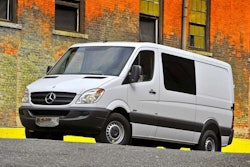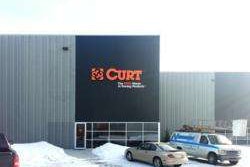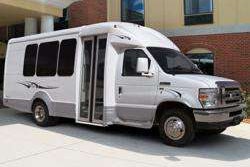HITCHED ‘N’ HAULIN’
2013’s newest towing products make the hitch-and-go part of work easier
By John Tiger
Towing is an integral part of any construction and landscaping business, and something the majority of pickup owners do, be it related to work, recreation or both. That’s why today’s pickups come with hitch receivers installed from the factory.
But just because there’s a hitch on the company truck doesn’t mean it’s the best, newest or even the most efficient for your towing needs.
For many years, the trailer hitch and towing market has remained stable with few advancements and updates in technology, but no real breakthroughs.
But 2013 is another story. There’re new players in the game, and new hitches for those with new vehicles – or for those just wanting to upgrade their pickups with the latest technology.
NEW PLAYERS
For the past decade, the aftermarket towing products market was dominated by three big players: Cequent, Curt Manufacturing and Valley Towing Products.
Cequent (parent company of Reese, Draw-Tite and Hidden Hitch) has been the “Big Kahuna” since the early 2000s with Curt Manufacturing chewing away at Cequent’s dominance until they are now considered equals.
Another well-know name n the towing circles going strong is B&W Trailer Hitches, a Kansas company that’s proud of offering towing products Made In America. We’ve used their Turnoverball goosenecks on several of our project truck upgrades over the years.
Valley hasn’t fared as well, recently closing up shop. However, several new players have stepped onto the field to fill the Valley void, albeit in a limited fashion.
Westin, a prolific manufacturer of popular pickup truck accessories for many years, used 2013 to launch their line of towing products. The company has more than 50 vehicle applications including Class III receivers for SUVs and pickups. They also have a full complement of electrical accessories to match.
Husky Towing Products has also stepped up the towing aftermarket offerings. They have made towing safer and easier with innovative, industry-leading refinements to their line of heavy-duty fifth wheel, gooseneck and weight-distributing hitches.
Bosal has also entered the U.S. towing products market, targeting full-size SUVs. Bosal is a major hitch player in Europe, Russia and South Africa, manufacturing over a million hitches a year there, offers a European-style concealed SUV hitch that hides completely behind the bumper and is not visible unless it’s being used.
HITCH REFINEMENT
Husky has spent a lot of R&D time and money engineering one of the best sway-control weight-distributing hitches on the market.
They also invested a lot bringing their line of fifth wheel and gooseneck hitches to the top of the hitch market as far as durability, safety and ease-of-use.
In early 2013, Curt installed a new A-coat/powdercoat paint system for all their hitches and accessories.
A-coat (Autophoretic painting) is a system similar to E-coat (Electro-deposition coating) where the hitch is immersed completely in a liquid coating, so the paint covers the entire part both inside and out.
After the A-coat paint is applied and cured, it’s powder-coated, making their hitches one of the best protected on the market.
Meanwhile, Cequent has been hard at work upgrading their Ultra Frame line of heavy-duty receivers with a one-piece cast center section and receiver tube. These changes make the hitches both stronger and cleaner in appearance.
HI-TECH HITCH WIRING
While hitches continue to be relatively easy to install, it’s the electrical part of the hitch installation that continues to challenge even experienced installers.
You can no longer just snap a Scotch-Lok over the taillight wires and be good-to-go because today’s vehicles use very sophisticated computer-controlled electrical systems that require equally sophisticated trailer wiring harnesses.
The new tow vehicle wiring harnesses use advanced circuitry, circuit protection that isolates the tow vehicle’s electrical system from trailer wiring problems, and bypass circuitry that connects directly to the tow vehicle’s battery to eliminate potential problems with the tow vehicle’s computer system.
Installing one of these systems is quite a bit different than simply finding the taillight, left and right turn and brake wires and connecting the trailer harness to them, like in days past.
Today, most tow vehicle harnesses are vehicle-specific, so factory connectors allow for installation without cutting or splicing wires.
In some cases, a single wire is routed to the battery and connected there with a fuse or relay. That wire must be protected from shorts, as it’s powered at all times.
So be as careful about selecting your tow vehicle wiring harness as you are when selecting that new hitch – be it one of these or another you may find during your hitch-shopping research.
HOT HITCHES









